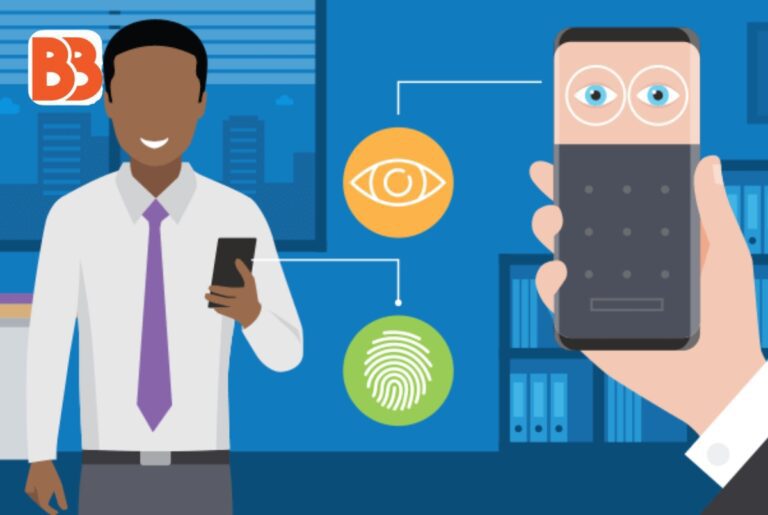Biometric authentication has become an integral feature in modern mobile devices, offering a seamless and secure way for users to access their phones, apps, and sensitive information. Gone are the days of complex passwords and PINs—today’s smartphones use biometric data, such as fingerprints, facial recognition, and voice patterns, to ensure secure access. With advances in technology, biometric systems in mobile devices are evolving rapidly, providing users with improved security, convenience, and speed. This article explores the key trends and technologies driving biometric authentication in mobile devices.
Fingerprint Recognition: The Pioneer of Mobile Biometrics
Fingerprint recognition was one of the first biometric technologies widely adopted in mobile devices, starting with the Apple iPhone 5S in 2013. This technology utilizes a sensor embedded in the device’s home button or display, allowing users to unlock their phones or make secure payments by scanning their fingerprint.
In recent years, fingerprint technology has become more sophisticated with the development of in-display fingerprint scanners. Companies like Samsung and OnePlus have integrated these scanners directly into the screen, eliminating the need for physical buttons. These in-display sensors use ultrasonic or optical technology to create a 3D map of the user’s fingerprint, offering better accuracy and security.
Trends:
- In-display sensors are becoming more common, especially in flagship smartphones.
- Multiple fingerprints can be stored on one device, enhancing personalization and ease of access.
- Ultrasonic fingerprint scanners, which can read fingerprints even when the screen is wet or dirty, are leading the next wave of innovation in this field.
Facial Recognition: Enhanced by AI
Facial recognition technology has rapidly grown in popularity, largely thanks to Apple’s Face ID, introduced with the iPhone X in 2017. This technology uses depth-sensing cameras and 3D mapping to scan and identify a user’s face. Facial recognition has a major advantage in terms of convenience, as users simply need to glance at their phones for authentication.
AI plays a critical role in enhancing facial recognition systems, making them more adaptive to changes in users’ appearances. Such as glasses, beards, or different lighting conditions. AI-driven facial recognition systems can quickly learn from repeated interactions, ensuring consistent accuracy and speed.
Trends:
- 3D facial recognition is more secure than traditional 2D methods, which can be fooled by photos or videos.
- AI-powered systems can now handle liveness detection, identifying real faces versus images or videos.
- Infrared-based systems enable facial recognition in low-light conditions, improving usability at night or in dark environments.
Iris and Retinal Scanning: A Niche but Secure Option
Although not as widely adopted as fingerprint or facial recognition, iris and retinal scanning provide a highly secure alternative for mobile authentication. Samsung was among the first to introduce iris scanning with its Galaxy S8. These technologies work by analyzing the unique patterns in a user’s iris or retina, which are highly difficult to replicate.
While iris scanning offers enhanced security, it has yet to reach mainstream adoption due to challenges like high cost and speed. And environmental limitations (such as difficulty in bright light).
Trends:
- Continued use in high-security applications for mobile devices, especially in industries where sensitive data is involved.
- Combined biometrics—iris scanning paired with facial or fingerprint recognition—could emerge as a more comprehensive solution in the future.
Voice Recognition: The Rise of Voice Biometrics
Voice recognition is becoming more prominent as AI virtual assistants like Siri, Google Assistant, and Amazon Alexa grow in popularity. This technology works by analyzing the unique characteristics of a person’s voice, including pitch, tone, and rhythm.
While still in its early stages for authentication purposes, voice biometrics is promising for hands-free authentication. However, it faces challenges in noisy environments or situations where users’ voices might change due to illness or other factors.
Trends:
- Voice recognition could become a vital component in multi-factor authentication, working in conjunction with other biometric methods.
- Improved AI algorithms are making voice biometrics more accurate and reliable.
Behavioral Biometrics: The Future of Continuous Authentication
Behavioral biometrics is an emerging field that tracks how users interact with their devices, including typing patterns, swiping gestures, and even how they hold their phone. By continuously monitoring these behaviors, mobile devices can ensure the user’s identity without requiring explicit authentication every time.
This form of biometrics is particularly useful for continuous or passive authentication, where the system constantly verifies the user’s identity in the background, reducing the need for frequent logins.
Trends:
- AI and machine learning are essential in analyzing complex patterns and behaviors to establish unique behavioral profiles for users.
- Continuous authentication could replace traditional authentication methods in scenarios where seamless security is essential, such as mobile banking.
Privacy and Security Challenges
As biometric authentication technologies advance, so do concerns about privacy and data security. Storing sensitive biometric data on devices or in the cloud creates potential risks if that data is compromised. Unlike passwords, biometric data cannot be easily changed if stolen, leading to the need for more secure storage and processing methods.
One solution is the use of on-device encryption and secure enclaves—dedicated hardware areas that store and process biometric data locally, without sending it to external servers. This approach minimizes the risk of data breaches.
Trends:
- The rise of privacy-focused AI algorithms that anonymize biometric data.
- Increased regulation around data protection and biometric data management.
Conclusion
Biometric authentication in mobile devices is continually evolving, driven by advancements in AI, sensor technology, and user demand for convenience and security. From fingerprint and facial recognition to emerging behavioral biometrics. The future of mobile authentication is leaning toward faster, more secure, and seamless user experiences.
As these technologies develop, maintaining a balance between security and privacy will be essential, ensuring users can trust. That their biometric data remains safe while benefiting from the ease of use. Looking ahead, multi-modal biometric authentication and continuous authentication could become the standard for mobile security, ensuring robust protection without compromising convenience.
Read More:
The Role of AI in Enhancing Biometric Authentication Systems
